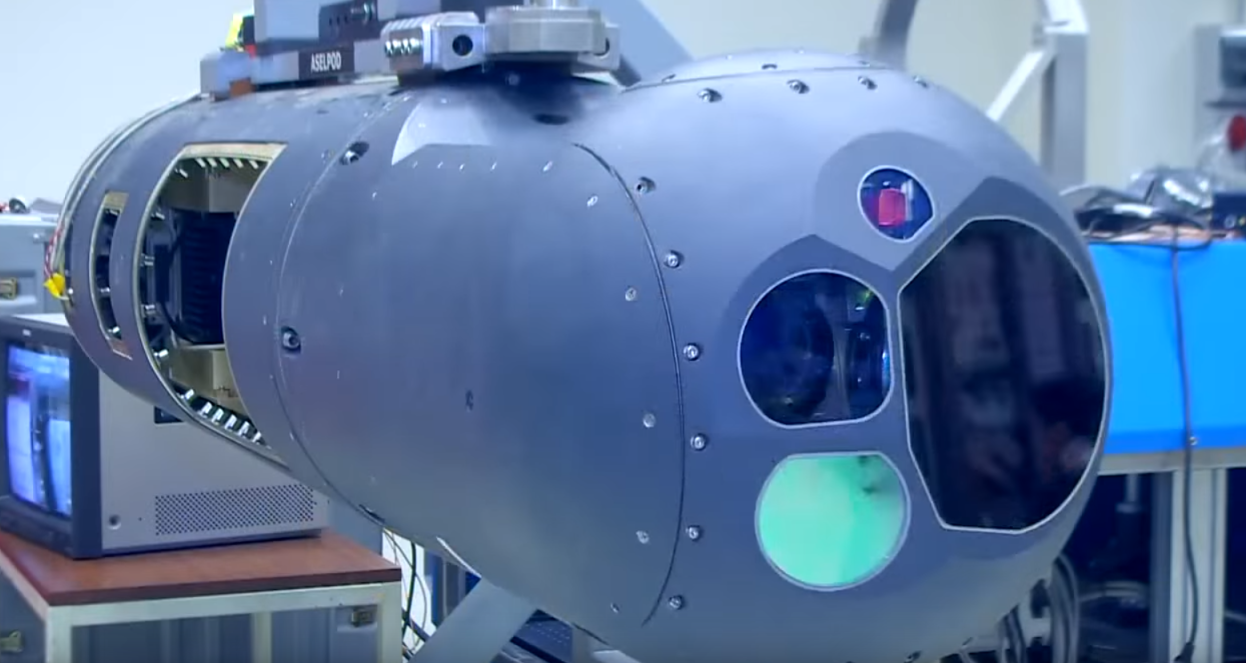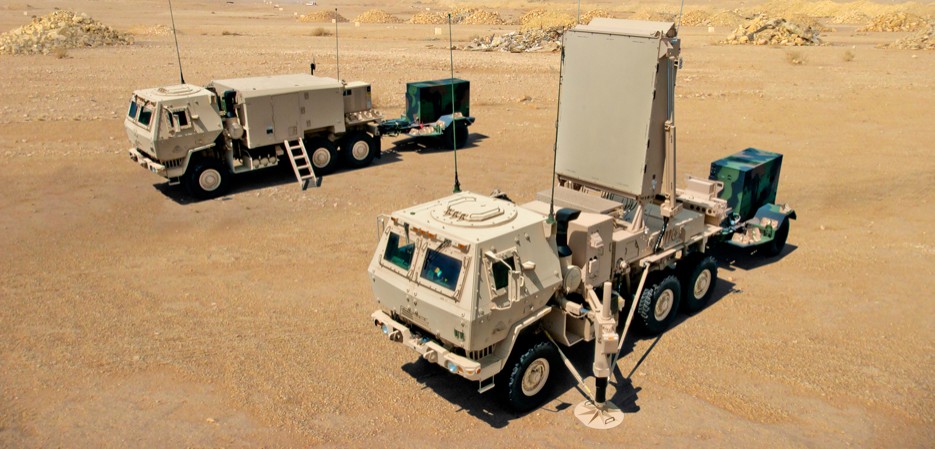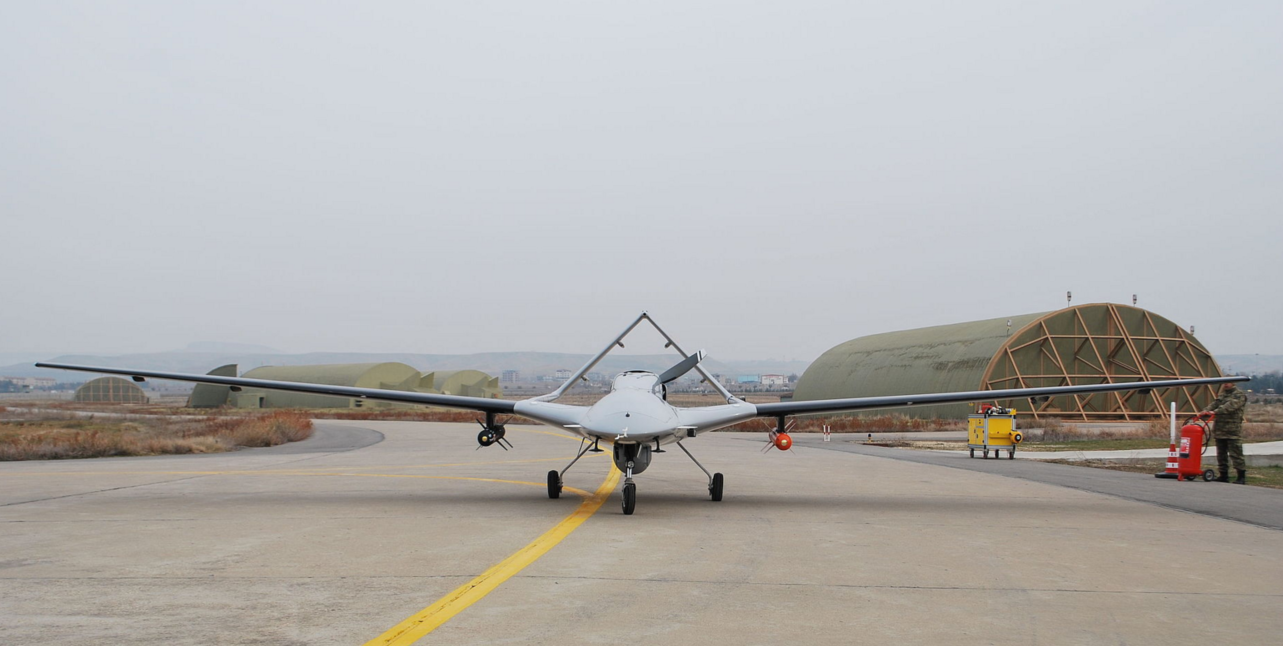2907Views 5Comments

Turkey’s Aselsan is selling eight ASELPOD targeting pods to Pakistan
Earlier in the month, Aselsan, one of Turkey’s main defence vendors, announced that it had secured a $25 million U.S. export sale for its ASELPOD advanced targeting pod. It did not disclose the country, but at this point is all but an open secret that the customer is Pakistan.
According to Turkey Monch Publishing, a leading Turkish language defence news outlet, Aselsan will sell 16 [edit: eight] ASELPOD advanced targeting pods under the $25 million contract. The delivery of the pods will begin in 2017, and the integration process take place in both Turkey and Pakistan.
In Turkey, Aselsan will configure the pod for the receiving platform – i.e. the JF-17 Thunder. This would include work on the ASELPOD’s software and communications equipment, to ensure that the system works with the native systems onboard the JF-17. Meanwhile, Pakistan will produce the external pylon or hard-point that will be used for the ASELPOD.
Aselsan reportedly competed against the Thales Damocles and Lockheed Martin Sniper for the contract, but won on the grounds of offering a package that offered the right balance of performance and savings.
The Turkish Air Force has 73 ASELPODs in the pipeline, which in time will join the 16 it is already using on board its F-16 and F-4 combat aircraft as well as CN-235 light utility transport aircraft.
Development of the ASELPOD is ongoing; for example, a two-way data-link configuration is being developed, this will enable the ASELPOD to double as an intelligence, surveillance and reconnaissance (ISR) solution in addition to its principal role as a targeting pod.
The ASELPOD weighs 235kg and has a length of 2.35m. Its electro-optical and infrared (EO/IR) sensors can track up to eight targets at a laser-designation range of up to 25km, and a general range of up to 55km. It can track moving vehicles such as main battle tanks at up to 15km. The ASELPOD can be used a day and at night, and it is capable of being paired with laser-guided and INS/GPS precision-guided munitions.
Comment and Analysis
This is among two major defence programs to have been finalized between Turkey and Pakistan in June, with the other being a deal to upgrade Pakistan’s Agosta 90B submarines.
The Pakistan Air Force (PAF)’s rationale for procuring the ASELPOD could be drawn to three major reasons: First, the apparent desire to have the JF-17 support the Sniper-equipped F-16 in ground attack missions in Pakistan’s counterinsurgency (COIN) campaign over the Federally Administered Tribal Areas (FATA). To what extent this purchase is motivated by that desire, especially in response to the defunct deal for new F-16s, is not known.
Second, demonstrating the JF-17’s platform flexibility. By integrating the ASELPOD, the PAF can tangibly demonstrate that the JF-17 is truly compatible with a wide range of systems available on the market, including Western equipment. While some prospective customers could be content with sourcing the Chinese WMD-7 targeting pod with LT and LS-series bombs (e.g. Nigeria), others, such as Morocco, could prefer Western systems. The ASELPOD is proof that it could be done, and – to Aselsan’s benefit – it makes the ASELPOD an option for customers seeking a ‘NATO-standard’ system.
Third – while achievable through the WMD-7 – it enables the PAF to diversify the source of its tactical attack capabilities, which today is heavily centered on the F-16s, which are configured to use the Sniper Advanced Targeting Pod alongside the Paveway and Joint Direct Attack Munition (JDAM).
Unlike the Sniper and Damocles, the ASELPOD provides the Pakistan Air Force (PAF) with a higher margin of freedom in terms of munitions pairing and usage, and a lower cost and regulatory burden.
The PAF will likely push to pair the ASELPOD with laser-guided bomb (LGB) and precision-guided bomb (PGB) designs that are (or at least could be) produced domestically. For example, the Range Extension Kit (REK) produced by Global Industrial Defence Solutions (GIDS) would be a prime candidate for pairing with the ASELPOD. The JF-17 could use the ASELPOD to identify a target at stand-off range, and then feed the target’s coordinates to the REK-equipped Mk-8x bomb, which has a range of up to 60km. For solutions that are not yet produced in Pakistan, the PAF has the freedom to shop around for designs of its choice.
The TuAF and Aselsan are committed to the ASELPOD program. In the coming years the ASELPOD will see various improvements – such as two-way data-link its EO/IR sensors – as well as potentially EO/IR range extension. Aselsan has other programs in the pipeline as well, such as a photo-reconnaissance pod derived from Terma’s Modular Reconnaissance Pod, and a tactical synthetic aperture radar (SAR) reconnaissance pod. Whether the PAF would opt for these solutions is another story, but these are options.
Note (May 25 2017): The 2015-2016 yearbook of the Pakistan Ministry of Defence Production confirms that eight ASELPOD targeting pods were ordered for $24.96 million U.S. for the JF-17.



5 Comments
by Catalyst
Fantastic news. Great start to a day. Alhamdolillah.
by Salman Khan
Ye hi to ASEL news hey
by Bilal Khan - Quwa
Regarding the WMD-7 I can only speculate to be honest. As for the Sniper, yes, LM is a business at the end of the day, they’ll explore their options, but the PAF would have had to secure U.S regulatory approval if it went with the Sniper.
by Sami Shahid
this is soooo nice ! hope PAC will install a Mach 1.8 engine as well
by U
Although the sniper would have been the best in terms of technology and also that PAF already operates it, out of the three, the Turkish are for sure the most reliable supplier and will grant the most amount of freedom.
Are these to be integrated on block 2 or are they for the upcoming block 3?